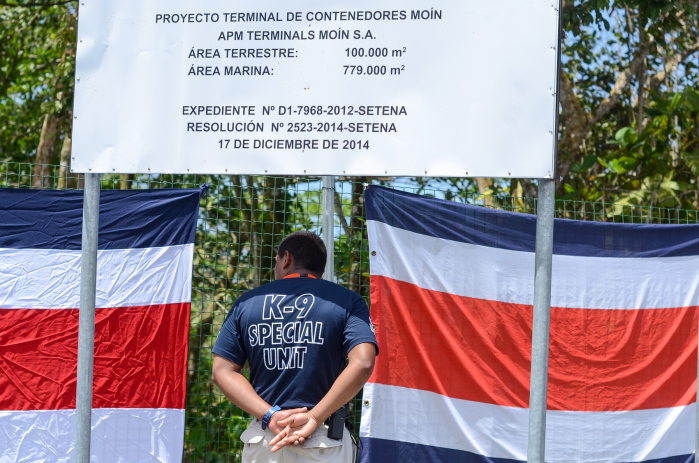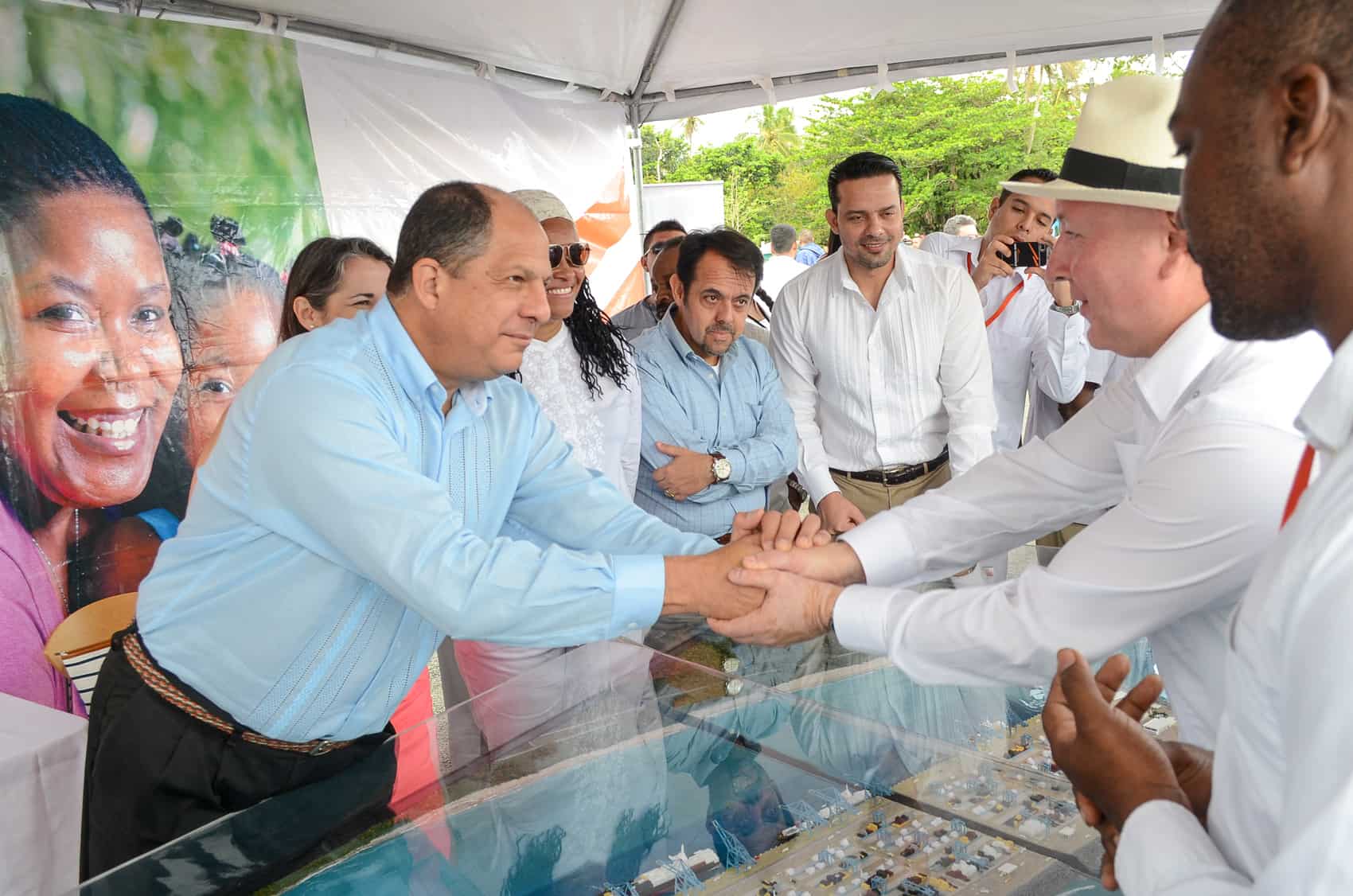MOÍN, Limón — Sunday morning started out rainy and overcast in the Caribbean port city of Limón. But the sun eventually broke through the clouds, and through the early morning mist, the cargo ships — the town’s economic lifeblood — waiting in the harbor came into view.
As the day’s weather improved, officials and business leaders gathered on Moín beach to celebrate what they said was a new beginning for a region hampered by unemployment and violence, and largely abandoned by the central government.
The $1 billion Moín Container Terminal project, long delayed because of labor and environmental disputes, celebrated its formal groundbreaking Sunday on the beach where the Dutch concessionary APM Terminals will build the most advanced container port of its kind in Central America. Costa Rica Foreign Trade Minister Alexander Mora called the terminal the most important infrastructure project in modern Costa Rican history.
Paul Gallie, managing director for APM Terminals Central America, said the new port would help modernize Costa Rica’s shipping infrastructure and ease the high costs the country incurs when cargo ships are stuck waiting to unload onto the port’s small docks.
The new terminal will sit on an 80-hectare artificial island constructed west of the original Moín docks. Construction is expected to take 36 months.
The terminal will span 1.5 kilometers and receive so-called Post-Panamax ships — vessels designed to take full advantage of the expanded Panama Canal. When finished, Gallie said, the new docks will be able to receive ships more than three times bigger than the current docks are able to receive.

The Moín Container Terminal is set to quadruple the port of Moín’s current capacity, to an estimated 2.5 million TEUs — twenty-foot equivalent units, the industry standard for measuring cargo — annually by 2030, according to the project’s master plan. The Port of Seattle, in comparison, has the capacity to handle close to 3 million TEUs.
The terminal will include specialized berths for container and refrigerated cargo, as well as traditional cargo.
Initial construction began in January after the the Environment Ministry’s National Technical Secretariat, SETENA, greenlit construction permits.
Gallie framed the project as a second chance for Costa Rica to take advantage of its proximity to the Panama Canal after a century of scant investment in its ports. The World Economic Forum’s 2014-2015 Global Competitiveness Report ranked Costa Rica 115 out of 144 countries surveyed in port infrastructure.
“I’m a patient guy. I’ve waited five years,” Gallie told the crowd, referring to the years of legal disputes and environmental concerns that delayed the project. “I could wait more but Costa Rica can’t afford to wait longer,” he said.
On Moín beach, overlooking the stretch of sea where the artificial island will rise from the waves, Gallie told The Tico Times that the project will create an estimated 700 construction jobs, many of which are to be filled by Limón residents.
Once the first phase of construction is complete, another 600 people will be needed to operate the mega-terminal — from administrators to dockworkers.
Gallie said the company was aware that Limón — a canton were only 17 percent of school children graduate from high school — would likely have a deficit of skilled labor to run the terminal when it opens in 2018. He said APM Terminals was working with the National Training Institute, INA, and other educational institutions to train local workers.
“At some point in time I would like to see the whole terminal run by limonenses,” Gallie said, using the Spanish name for Limón residents.
President Luis Guillermo Solís, who also attended the groundbreaking, urged the people of Limón to leverage their native English, along with engineering and other skills, to take full advantage of the job opportunities the new terminal will bring. The president said learning Chinese alongside English was a key to success for young workers.
Solís said the Moín Container Terminal was not an end in itself but the beginning of many more projects that would improve Limón, including the recently-approved financing for the Route 32 highway expansion, the $98 million investment announced Saturday to renovate the National Oil Refinery’s Caribbean dock, and an expanded border crossing between Costa Rica and Panama, among others.
Security was tight at the beachfront event but threats of significant protests did not materialize during the ceremony.
The daily La Nación reported that a group of 75 from the dockworkers union, SINTRAJAP, blocked the access road to the existing Moín docks for several hours Sunday morning. But the roadblock was cleared by noon.
Speaking to the crowd gathered at the ceremony, APM Terminals Vice President Tiemen Meester said what many here are pinning their hopes on: “In three years, we’re really going to put Costa Rica on the map.”







